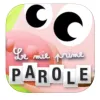Take a look inside 5 images
My first Italian words: the complete collection
Pros: Crisp graphics and straightforward play will draw kids in.
Cons: Lacks background, depth, and inspiration in game design and approach to learning.
Bottom Line: Simple spelling app for kids who know Italian. Kids who want to learn Italian may need to look elsewhere.
Play is best geared toward kids who are strong readers and want to explore some Italian words or kids who already have a good knowledge of Italian. Otherwise, the Italian pronunciation of the letter names may confuse kids who are just learning to read and have minimal experience with Italian words and pronunciations. This app may be a useful supplement for teachers introducing Italian as a foreign language, but teachers will need to provide context for the new words. After learning these words in other ways, kids can reinforce their learning and increase their exposure to new words with these simple spelling games. With no way of tracking progress, however, it will be hard for teachers to assess what individual kids are getting out of the spelling games.
This app introduces kids to basic Italian words in three categories: animals, foods, and colors. Kids choose a category and a level, and then see a picture of a target word (an apple, for example) and drag letters to their correct places to spell the word mela (apple). When kids tap each letter, they hear its name (in Italian); when they finish spelling the target word, they hear the letter names again and then the word (M-E-L-A, mela). Kids hear a word used in context only in the color category (e.g., bianco come la neve; white like the snow). Level one shows the letters shadowed in their correct positions; level two has no shadows, but it doesn't let kids place letters in incorrect slots; and in level three, incorrectly placed letters fall out when the word is complete, so kids must keep trying until they spell the word correctly. Kids can choose from three font types: lowercase, uppercase, and a cursive-like font (although letters don't connect like cursive writing does).
Vivid graphics and a clean, straightforward design make it easy for kids to interact with a variety of basic Italian words. Yet, the emphasis on spelling words rather than experimenting with them in context suggests that this app is most relevant for Italian-speaking kids who are learning to read. Even with that audience in mind, gameplay can be repetitive and uninspired, although the leveling does add some complexity. Providing letter names rather than sounds might make it hard for kids to understand how the words are actually built. Non-Italian-speaking kids trying to learn Italian may end up learning some new words, but without context or support, learning is likely to be minimal. And some may run across problems with the audio track, making play difficult, although this problem does not present across all devices.












